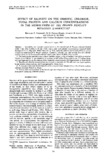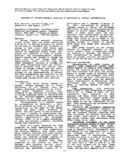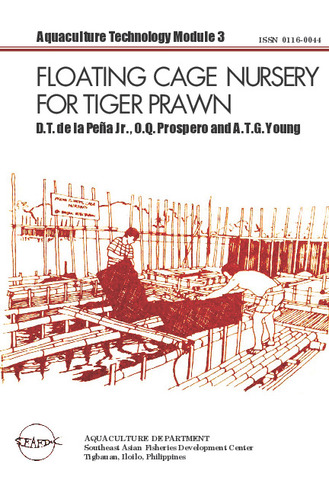Effect of salinity on the osmotic, chloride, total protein and calcium concentrations in the hemolymph of the prawn Peneaus monodon (Fabricius)

រកមើល / បើក
កាលបរិច្ឆេទ
1986Page views
673ទិន្នន័យមេតា
មើលកំណត់ត្រាលម្អិតនៃធាតុCited times in Scopus
Share
អរូបី
1. Osmolality and chloride concentrations in the hemolymph of Penaeus monodon became stable 1 day after molting in 32 ppt, while total protein and calcium concentrations remained stable throughout the molting cycle. When intermolt (≥ 36 hr postmolt) animals were transferred from control (32 ppt) to experimental (8–40 ppt) salinities, osmolality, chloride and total protein, but not calcium, concentrations in the hemolymph achieved steady state values 24–48 hr after transfer.
2. The hemolymph osmolality was a linear function (slope = 0.28) of medium osmolality at salinities between 8 and 40 ppt. It was isosmotic to seawater at 698 mOsm (10 g prawns) and 752 mOsm (30 g), and was hyperosmotic to the medium below isosmotic concentrations, and hypoosmotic to those above.
3. Hemolymph chloride concentration was isoionic to seawater at 334 mM, and was hyperregulated below isoionic concentrations, and hyporegulated to those above.
4. P. monodon maintained its hemolymph calcium concentration between 6.4 and 10 mM when medium salinities increased from 8 to 40 ppt.
5. Total protein concentration in the hemolymph was independent of medium salinity (8–40 ppt) and hemolymph osmolality (540–850 mOsm).
ការពិពណ៌នា
SEAFDEC Aquaculture Department Contribution No. 159.
Suggested Citation
Ferraris, R. P., Parado-Estepa, F. D., Ladja, J. M., & de Jesus, E. G. (1986). Effect of salinity on the osmotic, chloride, total protein and calcium concentrations in the hemolymph of the prawn Peneaus monodon (Fabricius). Comparative Biochemistry and Physiology - Part A: Physiology , 83(4), 701-708. https://doi.org/10.1016/0300-9629(86)90713-9
ប្រធានបទ
Taxonomic term
បណ្តុំបណ្តុំ
- AQD Journal Articles [1249]
Related items
Showing items related by title, author, creator and subject.
-
Response of Penaeus monodon juveniles to aflatoxin B1 dietary contamination
Bautista, M.N.; Lavilla-Pitogo, C.R.; Subosa, P.F.; Begino, E.T. (Asian Fisheries Society, 1994) -
The environmental effects of aquaculture with emphasis on the intensive prawn farming in the Philippines.
Primavera, Jurgenne (The Economic Society of Thailand, 1993) -
Floating cage nursery for tiger prawn
de la Peña, Dioscoro T.; Prospero, Oscar Q.; Young, Alexander Thomas G. (Aquaculture Department, Southeast Asian Fisheries Development Center, 1985)



